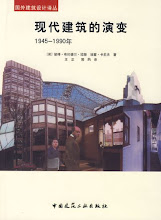Tuesday 26 February 2013
The Architectural Consequences of 'Theatrum Mundi'
March will see the publication of the latest volume in the Ashgate Studies in Architecture
(edited by Eamonn Canniffe)
ARCHITECTURE AS A PERFORMING ART edited by Marcia Feuerstein and Gray Read
How do buildings act with people and among people in the performances of life? This collection of essays reveals a deep alliance between architecture and the performing arts, uncovering its roots in ancient stories, and tracing a continuous tradition of thought that emerges in contemporary practice. With fresh insight, the authors ask how buildings perform with people as partners, rather than how they look as formal compositions. They focus on actions: the door that offers the possibility of making a dramatic entrance, the window that frames a scene, and the city street that is transformed in carnival. The essays also consider the design process as a performance improvised among many players and offer examples of recent practice that integrates theater and dance. This collection advances architectural theory, history, and criticism by proposing the lens of performance as a way to engage the multiple roles that buildings can play, without reducing them to functional categories. By casting architecture as spatial action rather than as static form, these essays open a promising avenue for future investigation.For architects, the essays propose integrating performance into design through playful explorations that can reveal intense relationships between people and place, and among people in place. Such practices develop an architectural imagination that intuitively asks, "How might people play out their stories in this place?" and "How might this place spark new stories?" Questions such as these reside in the heart of all of the essays presented here. Together, they open a position in the intersection between everyday life and staged performance to rethink the role of architectural design.
Saturday 23 February 2013
Tuesday 19 February 2013
Blurred Observations
BLURRED OBSERVATIONS: THE LATE NINETEENTH CENTURY GRAND TOUR OF CAPTAIN J. DOUGLASS KENNEDY An essay by Eamonn Canniffe on the Roman photographs of Captain James Douglass Kennedy has been published as Chapter 7 in this new book from Ashgate Nineteenth-Century Photographs and Architecture: Documenting History, Charting Progress, and Exploring the World Edited by Micheline Nilsen (Indiana University South Bend)
In the Introduction Micheline Nilsen writes "Some private collections of photographs, unidentified and idiosyncratic, are undecipherable for us today, others, more systematic or didactic in intent, remain accessible. The function of these albums varied from a private keepsake, a statement fit for public display, to a record for posterity. The specific function intended by Captain Kennedy for his albums may not be explicit but their content suggests a narrative he might have been reluctant to reveal."
Sunday 17 February 2013
Thursday 14 February 2013
Monday 11 February 2013
Friday 8 February 2013
The Architectural Consequences of the Law
The latest volume in the Ashgate Studies in Architecture edited by Eamonn Canniffe will be published this month.
ARCHITECTURE AND JUSTICE: Judicial Meanings in the Public Realm
edited by Jonathan Simon University of California Berkeley Nicholas Temple University of Huddersfield Renee Tobe University of East London
Bringing together leading scholars in the fields of criminology, international law, philosophy and architectural history and theory, this book examines the interrelationships between architecture and justice, highlighting the provocative and curiously ambiguous juncture between the two. Illustrated by a range of disparate and diverse case studies, it draws out the formal language of justice, and extends the effects that architecture has on both the place of, and the individuals subject to, justice. With its multi-disciplinary perspective, the study serves as a platform on which to debate the relationships between the ceremonial, legalistic, administrative and penal aspects of justice, and the spaces that constitute their settings. The structure of the book develops from the particular to the universal, from local situations to the larger city, and thereby examines the role that architecture and urban space play in the deliberations of justice. At the same time, contributors to the volume remind us of the potential impact the built environment can have in undermining the proper juridical processes of a socio-political system. Hence, the book provides both wise counsel and warnings of the role of public/civic space in affirming our sense of a just or unjust society.
Tuesday 5 February 2013
Saturday 2 February 2013
Subscribe to:
Posts (Atom)

























































